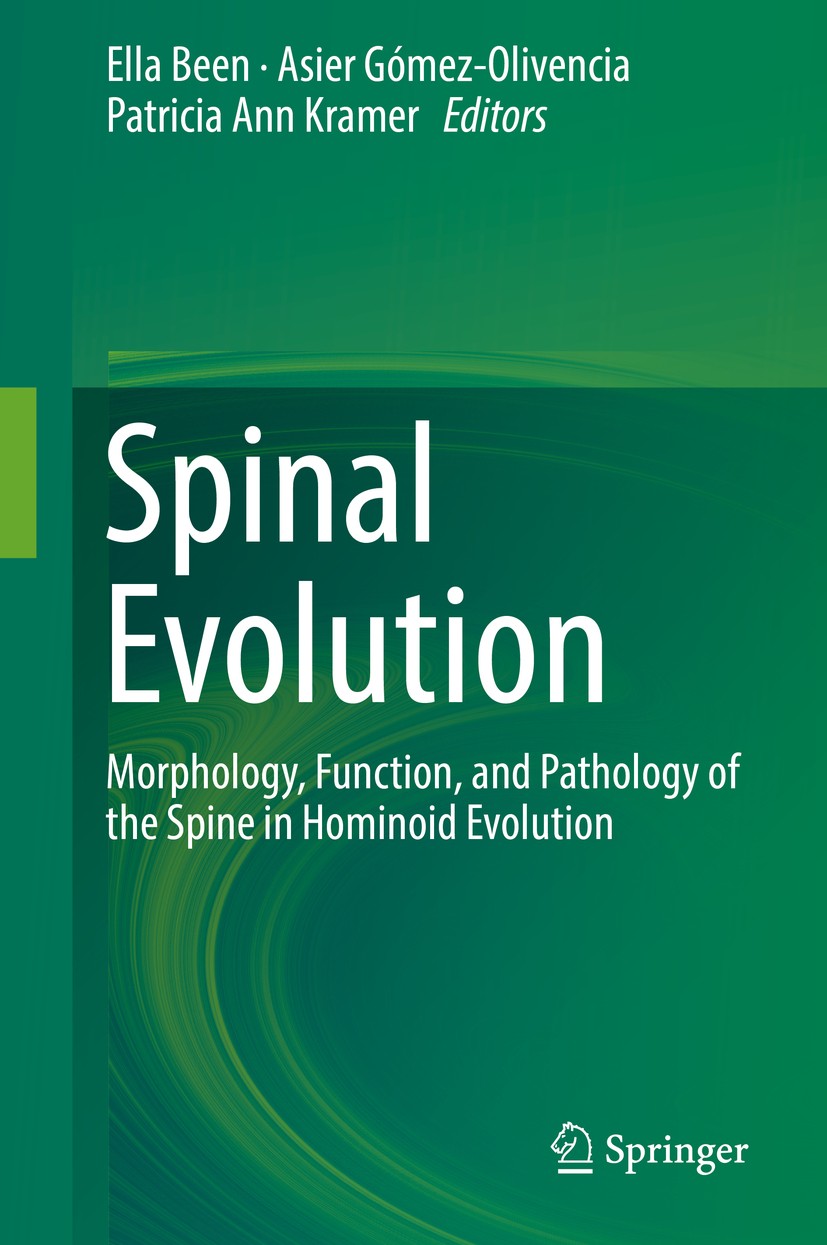| 书目名称 | Spinal Evolution | | 副标题 | Morphology, Function | | 编辑 | Ella Been,Asier Gómez-Olivencia,Patricia Ann Krame | | 视频video | http://file.papertrans.cn/875/874403/874403.mp4 | | 概述 | Explores new research methodologies and new data, including recent fossil, morphological, biomechanical, and theoretical advances regarding vertebral column evolution.Details new and exciting finds, m | | 图书封面 |  | | 描述 | .The vertebral spine is a key element of the human anatomy. Its main role is to protect the spinal cord and the main blood vessels. The axial skeleton, with its muscles and joints, provides stability for the attachment of the head, tail and limbs and, at the same time, enables the mobility required for breathing and for locomotion. Despite its great importance, the vertebral spine is often over looked by researchers because: a) vertebrae are fragile in nature, which makes their fossilization a rare event; b) they are metameric (seriated and repeated elements) that make their anatomical determination and, thus, their subsequent study difficult; and c) the plethora of bones and joints involved in every movement or function of the axial skeleton makes the reconstruction of posture, breathing mechanics and locomotion extremely difficult. ..It is well established that the spine has changed dramatically during human evolution. Spinal curvatures, spinal load transmission, and thoracic shape of bipedal humans are derived among hominoids. Yet, there are many debates as to how and when these changes occurred and to their phylogenetic, functional, and pathological implications. ..In recent ye | | 出版日期 | Book 2019 | | 关键词 | Vertebral spine; Posture; Locomotion; Hominoids; Pathology; Model vertebrates | | 版次 | 1 | | doi | https://doi.org/10.1007/978-3-030-19349-2 | | isbn_softcover | 978-3-030-19351-5 | | isbn_ebook | 978-3-030-19349-2 | | copyright | Springer Nature Switzerland AG 2019 |
The information of publication is updating

|
|
 |Archiver|手机版|小黑屋|
派博传思国际
( 京公网安备110108008328)
GMT+8, 2025-12-15 01:00
|Archiver|手机版|小黑屋|
派博传思国际
( 京公网安备110108008328)
GMT+8, 2025-12-15 01:00


